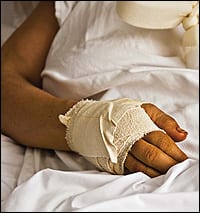A new article published in the journal Wiener Medizinische Wochenschrift (WMW) traces the history of the botulinum toxin from deadly food poison to popular beauty treatment.
Question: what do botulism and Botox have in common? Answer: sausages, and the Clostridium botulinum bacteria.
Most people know botulism as a form of food poisoning, contracted through eating infected products such as undercooked meats or canned goods. It is caused by the botulinum toxin, which is produced by the Clostridium botulinum bacteria.
Though relatively rare nowadays, when contracted, botulism is a serious illness causing symptoms that range from weakness, blurred vision and difficulty speaking or swallowing, to paralysis that begins in the shoulders and arms and moves down the body. In severe cases, paralysis of breathing muscles can cause respiratory or heart failure leading to death.
It turns out, however, that Clostridium botulinum is also behind the wrinkle-reducing effects of Botox. The drug is made from the botulinum toxin, and uses the toxin’s paralyzing effects to temporarily paralyze muscles in areas where the drug is injected. In more scientific terms, the toxin blocks nerve impulses responsible for muscle contraction, and thus diminishes the appearance of lines and wrinkles.
It is a temporary effect which wears off after about 3 or 4 months as new nerve terminals develop in the affected area of the skin. However, the procedure can be repeated and there are few side-effects, making it an increasingly popular anti-aging strategy.
Click here to view original web page at www.medicalnewsbulletin.com



